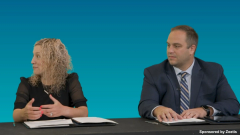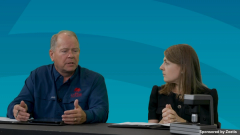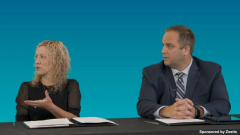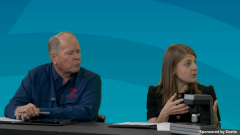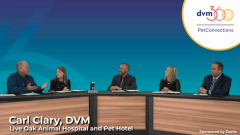
Trends in veterinary diagnostics and the standard of care
Examine the changing expectations of pet owners and the pivotal role of technology in providing individualized patient care
Episodes in this series

Sponsored by Zoetis
Adam Christman, DVM, MBA: And Dr. Penn, there's so many trends that are happening right now in the industry. So, what are some current trends that you're seeing in our industry? And how are these trends different versus, let's say, 2010?
Cory Penn, DVM: Yeah. So, I think that we what we're seeing now is we're seeing, which is a good problem, right? Lots of families are adopting pets, and we see a lot more of that happening. But with that comes increased caseload and as we went through the pandemic, we had a lot of those families who were sitting home who maybe didn't notice those things from their pets before they were watching them kind of every single day. And now they're more in tune with doing that and watching and really seeing what's happening with their pet. So, the caseload went up. And we know that as we think about caseload, we think about all of the efficiency concerns that we talk about. And you know, if we have all of these cases coming in, and we're trying to be as efficient, as thorough, because our pet owners...that pet is a member of their family, and they want a really thorough workup that can be communicated across to them. Back in 2010, When we think about what was available, there was not as much available. So, as we've had this increased caseload, really the need in veterinary medicine, in my mind, that was really there was to provide a way for practitioners or veterinary professionals to really have a way to help with workflow efficiency, to help with consistency, and to provide that value to be able to educate and communicate with those with those pet owners, which I think is just vital. And I think that has changed between now to where it was in 2010.
Adam Christman, DVM, MBA: And Dr. Hann, curious to get your opinion, because as an internist, you must have seen such a rapid change in the way in which we communicate to your point about technology as general practitioners. So what has it been like for you?
Lisa Hann, DVM, DACVIM (SAIM): Well, it's very interesting, just the trends we've seen of kind of the standard of care and the expectations of pet owners and what they want for their pets. And so, having technology and access to specialists in hand with that, just really bringing up the level of standard of care and what we can offer to them. So having easier access to a quicker diagnosis, and it's having our pet owners trust and understand what's going on, and then being able to access specialist sometimes beyond just the diagnosis, to really build up the opportunities and kind of the different aspects of care so that we can really maximize and pinpoint the exact needs of that particular case, rather than it just staying kind of more of a general workup and maybe not even really getting to that diagnosis in order to kind of really give the best care possible.
Newsletter
From exam room tips to practice management insights, get trusted veterinary news delivered straight to your inbox—subscribe to dvm360.

